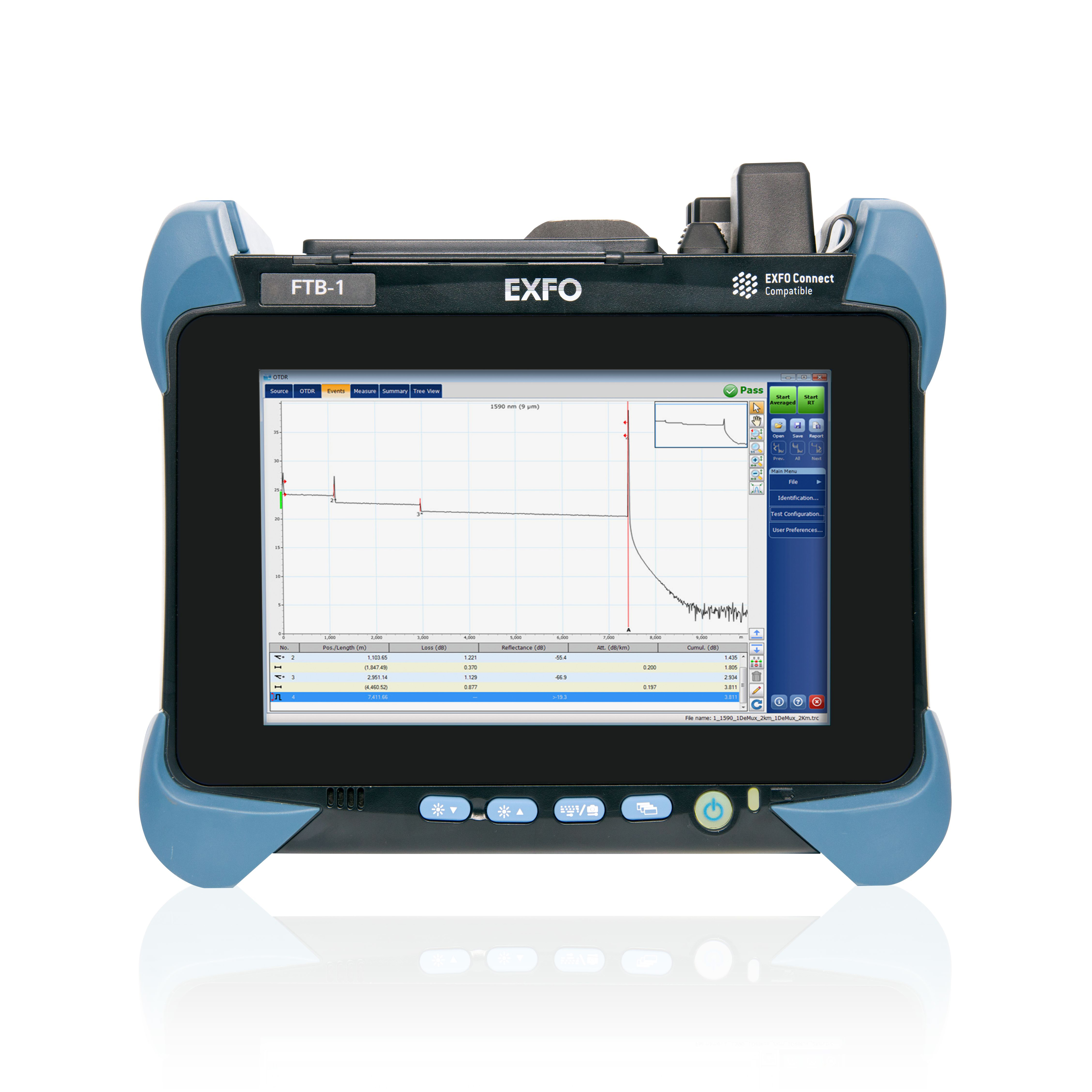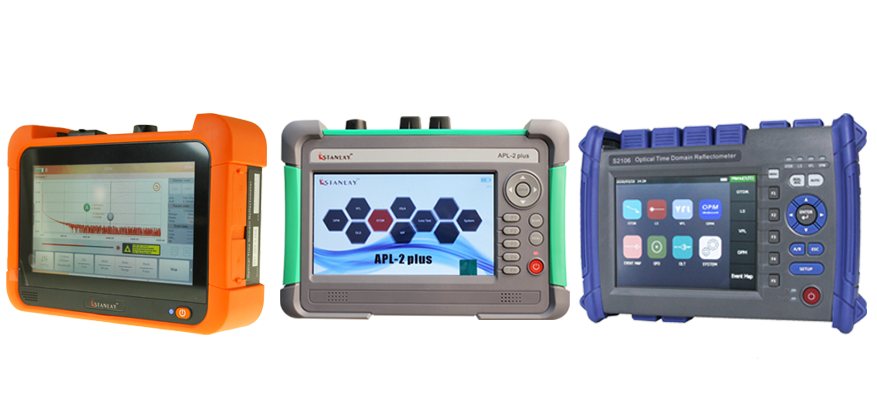How to Choose the right optical fibre diameter analyzer for your industry needs
A Comprehensive Guide to Optical Measurement System for Fiber Evaluation
When it comes to fiber analysis, comprehending optical dimension systems is vital for examining efficiency and ensuring high quality. You'll check out essential methods like interferometry and spectroscopy, which aid you measure essential specifications. There's more to it than just these approaches; mastering attenuation measurement methods can considerably influence your network's performance. As you browse via this overview, you'll reveal understandings that can change your approach to fiber optics.
Understanding Optical Measurement Systems
When you explore optical dimension systems, you'll find they're necessary for evaluating fibers with accuracy. These systems utilize light to analyze various qualities of fibers, including diameter, refractive index, and uniformity. By utilizing techniques like interferometry and spectroscopy, you can acquire valuable insights right into the fiber's properties.You'll locate that these systems are created to lessen errors and enhance accuracy, guaranteeing trustworthy information for your analysis. Different arrangements, such as single-mode and multi-mode systems, satisfy certain fiber kinds, allowing you to choose the most effective suitable for your needs.Moreover, the combination of innovative software devices aids you analyze the data efficiently, making it less complicated to recognize any type of disparities or defects. As you explore deeper into these dimension systems, you'll appreciate just how they enhance the analytical procedure and enhance the overall high quality of fiber production and screening.
Secret Criteria for Fiber Analysis
Trick parameters for fiber evaluation play a necessary duty in figuring out the quality and efficiency of optical fibers. When you review a fiber, you'll intend to concentrate on qualities such as attenuation, data transfer, and modal dispersion. Attenuation gauges the loss of signal stamina as light trips through the fiber. A reduced attenuation value shows better top quality and longer transmission distances - optical measurement system.Bandwidth refers to the data-carrying capability of the fiber and is essential for high-speed communication. You'll require to analyze the bandwidth to ensure it fulfills your application requirements. Modal diffusion, which emerges from the different speeds at which light trips through various settings in multimode fibers, influences signal clarity
Methods for Depletion Measurement

Bandwidth and Its Effect On Efficiency
Understanding transmission capacity is necessary for optimizing fiber efficiency, as it directly affects the amount of information that can be transmitted over a network. Greater bandwidth indicates you can send out more details at the same time, enabling faster communication and far better overall performance. When you're dealing with optical fibers, it's crucial to take into consideration exactly how transmission capacity communicates with fiber attributes, such as core size and material properties.If the data transfer is restricted, you may experience data loss or slower rates, impacting your applications. Furthermore, various kinds of fibers can support varying data transfer degrees, so it is very important to select the ideal fiber for your specific needs.You ought to likewise bear in mind that ecological factors, like temperature and outside disturbance, can influence bandwidth. By understanding these elements, you can make educated choices to boost your fiber optic systems, ensuring dependable and effective information transmission.
Refractive Index Measurement Approaches

Complete Interior Representation
Overall internal representation (TIR) serves as a basic principle for measuring the refractive index of fibers. When light journeys from a denser medium to a much less dense one, it can just be fully shown if the angle of incidence goes beyond a particular limit, called the essential angle. This phenomenon permits you to identify the refractive index by analyzing the angles at which light shows or refracts. By utilizing a configuration that routes light into a fiber and gauges the resulting angles, you can calculate the refractive index precisely. Understanding TIR not only boosts your fiber analysis however additionally improves the layout and performance of optical systems. Leveraging TIR can lead to much more efficient fiber-based applications.
Interferometric Strategies
Structure on the concepts of total internal reflection, interferometric techniques offer an effective means for determining the refractive index of fibers with high precision. These techniques make use of the disturbance patterns developed when light beam of lights split and recombine after taking a trip various courses. You can make use of arrangements like browse around these guys the Michelson or Mach-Zehnder interferometer to assess phase changes triggered by changes in refractive index. By thoroughly calibrating your system and examining the resulting edges, you can identify the refractive index with amazing accuracy. It's vital to preserve steady environmental conditions to reduce errors. With these techniques, you'll enhance your understanding of fiber residential or commercial properties, resulting in better efficiency in numerous applications, from telecoms to sensor technology.
Modal Dispersion and Its Value
Modal diffusion refers to the spreading of light pulses as they take a trip via a fiber, which can affect the overall performance of the system. You'll see that this sensation can cause indicate distortion, affecting information transmission rates and quality. Understanding its value is necessary for enhancing fiber optic designs.
Interpretation of Modal Dispersion
In optical fiber interactions, modal dispersion plays a substantial function in identifying signal quality and transmission rate. It occurs when various light modes take a trip at varying speeds with the fiber. Because each setting has unique courses and attributes, they can arrive at the obtaining end at different times. This moment difference can bring about indicate dispersing and distortion, which can break down the total performance of the interaction system. You may run into modal dispersion largely in multimode fibers, where the multiple courses of light intensify the concern. Understanding modal dispersion is essential for enhancing fiber layouts and guaranteeing that your interaction systems operate effectively, keeping the integrity of the transmitted signals over longer distances.
Results on Fiber Performance
Comprehending modal diffusion helps highlight its impacts on fiber efficiency. This sensation occurs when various settings of light travel at varying speeds within the fiber, bring about signify spreading in time. As you examine optical fibers, you'll notice that enhanced modal diffusion can substantially deteriorate signal high quality, causing lowered bandwidth and longer transmission distances. In functional terms, this suggests your information can arrive distorted or delayed, affecting general interaction performance. To minimize these effects, you might consider making use of single-mode fibers, which decrease modal dispersion. By choosing the best fiber type and comprehending exactly how modal dispersion influences performance, you can improve transmission high quality and assurance reputable information transfer in your optical dimension systems.
Tools and Technologies for Optical Measurements
When it concerns optical measurements, several innovative devices and modern technologies are at your disposal to enhance fiber evaluation. You'll locate fiber optic testers, which assess signal high quality and efficiency, important for keeping suitable network effectiveness. Optical time-domain reflectometers (OTDRs) are vital for finding mistakes and determining loss over distances, providing detailed understandings right into fiber stability. Furthermore, spectrometers can evaluate light spectra, aiding you determine material residential or commercial properties and composition.Don' t neglect the importance of imaging systems, like electronic microscopic lens, that enable you to aesthetically check fiber surfaces for defects. Think about using polarization analyzers to gauge anxiety and strain in fibers, which is crucial for comprehending their Bonuses actions under different conditions. By leveraging these devices and technologies, you can substantially enhance your fiber evaluation processes, making certain dependability and high efficiency in your optical networks.
Frequently Asked Inquiries
What Are the Costs Related To Optical Measurement Equipments?
The costs related have a peek here to optical measurement systems can vary significantly. You'll require to examine tools prices, maintenance costs, software licenses, and possible training expenses. Budgeting very carefully will aid you avoid unforeseen economic challenges down the line.

Just How Often Should Fiber Analysis Be Performed?
You should perform fiber evaluation regularly, generally every six months or after significant changes in the setting (optical fibre diameter analyzer). This assures excellent efficiency and assists determine potential issues prior to they influence your system's effectiveness and dependability
Can Optical Measurement Systems Be Adjusted in the house?
Yes, you can adjust optical measurement systems at home, yet it needs precision. Make certain you comply with the supplier's standards, utilize suitable calibration criteria, and verify your results to guarantee precision in your dimensions.
What Industries Frequently Use Optical Measurement Systems?
You'll find optical dimension systems widely made use of in markets like telecoms, manufacturing, medical care, and research. They're crucial for top quality control, fiber analysis, and guaranteeing specific dimensions in various applications, enhancing effectiveness and accuracy across markets.
Are There Any Kind Of Safety And Security Interest In Optical Measurement Systems?
Yes, there are safety worry about optical measurement systems. You should constantly put on safety eyewear to shield your eyes from extreme lights and assurance appropriate training to manage devices securely and stay clear of accidents.